25 Houseplants and the Balance of Life
Priscilla Howland
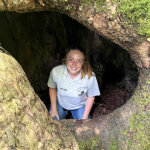
Hello! My name is Priscilla Howland. I decided the topic of my chapter while wracking my brain in my apartment while being surrounded by my thriving houseplants. I found Michael Pollan’s work in Second Nature: A Gardener’s Education to be especially inspirational and wanted to make a connection between his work and the rise of houseplants. The more that I dug into Pollan’s ideas, the more compelled I was to make a connection to our constructed personal environments and spirituality, as I was on my own spiritual journey at the time…read more.
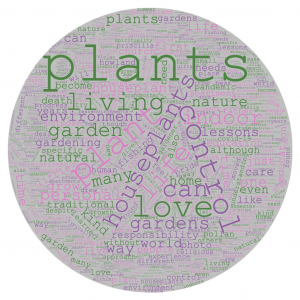

Growing up I was not a particularly religious person. I grew up in a Christian household, but we rarely went to church. My siblings and I were still somewhat involved in the church, we attended Vacation Bible School. When I outgrew the program, I volunteered as a group leader for the kindergarteners and first graders. I did this for about 4 years but was unable to continue volunteering due to my jam-packed high school schedule and extracurricular activities. Although I grew up learning the very basics about the bible, my knowledge and understanding are limited to the lessons taught to younger children. When asked about my specific denomination, I do not know how to reply. I simply say my church is the Ridgeway Church of Christ.
Even though I am not the most fundamentally sound in my religious education, I did come away from my time in church with many different lessons about life. I learned about the kindness and care we should have for all creatures, despite differences in appearance and circumstances. I also learned about the importance of being honest and living with intention and purpose. As an adult, when asked about my religious affiliation, I simply identify as Christian. This answer is much easier to explain than how I truly feel. I am hesitant to believe in an established God. But I do think that the universe works in specific ways and karma is real. I mainly try to focus my energy on the lessons about how to live in this world as a good person, versus living for a specific godly being. I find that people my age are adopting this mindset and outlook on religion and are collectively taking a more spiritual approach to life. This is not to undermine different religious establishments, but it gives a free form expression of life and love. Especially during these socially charged and changing times.
Continuing my reflection of my childhood and upbringing, I did not grow up with many houseplants. My mother had one hanging indoor plant that she received at my grandfather’s funeral. But other than that one plant, the only experience I had growing plants was with my dad out in his garden. My father would grow tomatoes and peppers every year. But it took many years of “training” before my father let me partake in caring for the crops. Some of the best conversations I have had with my father came while he was watering his tomato garden. I grew up in an agricultural community where we learned about how plants grow and where our food comes from. This kind of agriculturally based education is different than the education of my peers who grew up in a primarily urban community. So, even though I did not have specific in-depth experience with tending to plants, I have a good foundational understanding of plants and their needs.
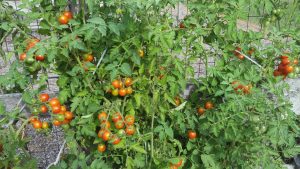
I have observed a noticeable increase in houseplant popularity amongst my generation throughout the past three years. Particularly, during the COVID-19 pandemic and quarantine this year. Houseplants are very flexible. Traditional gardens require property or land to cultivate crops. Plants are grown in the Earth, stationary in the ground. These traditional gardens are not mobile and require the gardener to have a stable living situation. This kind of gardening is typically not feasible for college students. College students are moving into dorms and off-campus apartments in the city each semester, often moving back home to their family homes in their hometowns when class is not in session. This period of frequent moving is not conducive to the proper planning, growing, and tending of traditional gardens. Instead of completely giving up on having a connection to nature through gardening, students have moved their gardens indoors. Our indoor gardens are our collections of houseplants. These houseplants are transportable and can be moved to wherever we reside.
Michael Pollan’s book Second Nature: A Gardener’s Education is a great inspiration to me when it comes to his relationship with nature, along with his analysis of how we interact with the wilderness. With indoor gardening, there is no ethical debate on what pristine wilderness is because the only plants in your personal indoors environment are intentionally introduced. There are no weeds or creatures to deter or evict from the indoor garden. Although there is a lack of debate about the ethics of pest control and barriers between the human environment and the rest of the wilderness and nature, there is a financial aspect of having houseplants. Typically, people buy their plants, soil, pots, and other materials. But there are ways around these barriers to allow for a more inclusive gardening experience. Regardless, according to Pollan, “a garden should make you feel you’ve entered privileged space — a place not just set apart but reverberant — and it seems to me that, to achieve this, the gardener must put some kind of twist on the existing landscape, turn its prose into something nearer poetry ” (Pollan 244). Houseplants are integrated into our environments and living spaces to create unique and personalized landscapes and poetry. Also, the houseplants can be supplemented by grow lights to fuse the plant’s space with the living space. This makes houseplants flexible and adaptable without the confines of property ownership and a stationary living situation.
Houseplants are essentially smaller, more simplified indoor gardens that can mobilize our ability to refine and regulate our personal environments. The increased accessibility allows for our own cultivation of a personal environment to be more organic and inclusive of natural elements, without having to expand our ultimate control to the outside natural world around us. Tending to houseplants gives us a sense of responsibility and control over the plants. This feeds our need for control in our lives. This control is examined by Richard Baer in his work, Our Need to Control: Implications for Environmental Education. Baer says, “[modern university and industry] are control-oriented, both measure success largely in quantitative terms, both are intent on gaining power over nature, both are extremely aggressive in orientation” (Baer 475). As humans, we are obsessed with control for many reasons. Many people measure a successful traditional garden by the upkeep and tidiness of the beds. Others measure the success of traditional gardens by their production. Either way, these quantified outcomes are achieved by controlling and manipulating the natural land to create an idealistic environment, even if it interferes with the natural landscape and ecosystem. Houseplants are a way to appreciate plants when land for an outdoor garden is not available. Houseplants are a malleable version of nature. They are often easier to deal with than an outdoor garden and are more easily manipulated for personal aesthetic preferences. As a way of connecting nature and culture – the natural world and the built environment – indoor plants are integrated into the interior design and layout for a cohesive environment that gives us a sense of control. Michael Pollan says, “I reject the conventions you’ve given me for ordering this land (my land!); now watch me strike my own relationship to it” (Pollan 229). When doing anything outside, your work is easily observed by your neighbors or onlookers (unless you have a fenced-in yard. Specifically, a fenced in backyard). It takes strength to reject convention as Pollan describes, especially when it is so easily seen. But this is not an issue for indoor gardens. While indoors, neighbors cannot see and judge or criticize your setup. It is your home! The place you live and grow. Creating a personalized environment that improves your relationship with yourself through self-care is so special. This sacred place is the perfect for exploring your relationship with plants and the characters of the natural world. This control is a way to self-regulate and gives a stress-free platform to be expressive and experiment with your green thumb, without fear of the watchful eyes of lurking “Karens”.
With houseplant experimentation, there are bound to be unsuccessful trials resulting in a deceased plant child. According to Baer, “our consistent refusal to deal openly with the meaning of our own finitude and mortality may well lie in the fact that death is one of the most obvious points where we are unable to maintain control over ourselves and our environment” (Baer 475). This observation of our human need for control is remarkably interesting when placed in the context of our finitude. In some way, shape, or form, I am convinced that everyone is afraid of death. In a place where we can cultivate our personal environments, our indoor gardens are not immune to death. Despite how much we tend to our houseplants, doing research about each specific type of plant and making notes of each individual’s water, sun, temperature, soil, and fertilization recommendations (and for the dramatic houseplants, requirements), we ultimately cannot control whether or not our plants live. We can try to have total control, but even the greenest thumb will still see casualties. Just like the best surgeon will still lose patients. We are all mortal and are finite.
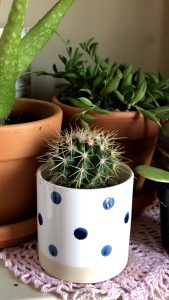
For example, I moved into my apartment and all my plants traveled with me (of course). After moving in, all my plants were transitioning well…or so I thought. My cactus, one of the super prickly ones, died very suddenly. Even though I followed the rules and was keyed into its needs, my cactus (named Señor Prickles) promptly deflated into a spike ball of goo within the first week of living in my new apartment. If this global pandemic was not a big enough reminder that life is short and that we never know when it will be our time to pass, certainly the unexpected loss of a dear houseplant will drive the point home. In all seriousness, taking care of another living thing takes a great deal of responsibility. We cannot control everything. We can control how we respond to situations and how we move forward with a growth mindset.
My grandmother has always had African Violets on her kitchen windowsill. For as long as I can remember they have bloomed into pretty, little, purple flowers and have been a staple in her kitchen. I admire my grandmother and her green thumb. So, for my 19th birthday, my mother gave me my own African Violet. Within two months it was dead. I was genuinely upset and convinced myself that I simply could not keep that kind of plant alive. Flash forward to this summer. I found myself in Lowe’s garden center looking at the plants on clearance (what can I say, I love a good deal). I found a little African Violet that was marked down to one dollar. At this point, it had almost been a year since the death of my first, so I was ready to try again. I took home the tiny plant and decided that I did not care if I killed it because after all, it was only one dollar and it would not be a huge loss. I also think that I was just preparing myself for failure. This time around I stopped being so stiff about the plant care and let go of my controlling “parenting style”. To my surprise, it did not die. In fact, it even bloomed! Letting go of my overbearing need for control was actually the key to allow my plants to live and thrive. Similarly to how humans get hung up on the finitude of our lives and fail to live in the moment, I was smothering my plants.

Through my obsessive need for control and regulation of my houseplants, I was unknowingly choking the life out of them. These living organisms are more than capable of surviving without the watchful eye of a human. So why wouldn’t that logic carry over to my own potted, living organisms? It is counterintuitive to let go of control. The more that we are faced with difficult situations, the tighter we want to hold onto the reins. Embracing life, despite our fear, is all part of being alive. I have applied my laissez-faire approach to plant parenting with the String of Pearls that I was entrusted to keep alive. I also used this approach with a 40-year-old jade plant that was a gift from my best friend’s grandmother. Even though I try not to be caught up in the fear of killing these gifts, the responsibility that I owe to do my best is empowering. This responsibility has strengthened my sensitivity to other people along with my plants. Being able to read what others need to grow and heal is so important in creating meaningful interactions. Being a caring and kind person, just as I learned in church. These lessons are everywhere and are intersectional.
But in life, there is sin. Niebuhr wrote about the sin of pride in his work, Man as Sinner, where he says, “the explicit character of this pride is fully revealed in all cases in which the universalistic note in human knowledge becomes the basis of an imperial desire for domination over life which does not conform to it” (Niebuhr 198). On social media, many lifestyle influencers post about their indoor jungles where their apartments and houses are consumed by their houseplants. These pages show an explosion of houseplants that make entire rooms and apartments feel like literal jungles. These collections of houseplants are a source of pride for these plant influencers. In addition to these jungles, people will buy and sell rare, variegated versions of popular tropical plants for hundreds and hundreds of dollars. Although not every indoor gardener enters this kind of houseplant market, the houseplant trade can become intense. During trying times like the COVID-19 pandemic, many people found comfort in creating indoor gardens and collecting new houseplants to admire and take care of. Unfortunately, we can become greedy and take on an excessive number of houseplants. Extreme cases of greed, infatuation, and the desire for more can manifest clouded perceptions of indoor gardening. Domination over plant life ends up ruling the life of the human seeking prideful control and the excitement of “more.” But this kind of excess can occur within virtually any hobby or pastime. Regardless of the inevitable excess that humans always seem to fall deeper and deeper into through greed, pride, or any other quick impulse with immediate gratification, houseplants themselves are not inherently bad. My personal experiences with my houseplants have taught me lessons that have built upon the fundamentals of living that I consider my expression of spirituality. My plants are a visualization of my progress in this endeavor.
I have come to love my plants and the process of helping them live and grow through being observant and sensitive to each of their needs. During discussions with friends we have explored the idea that love is complex and true love is poorly defined and more difficult to define than it would seem. I love how I feel when I look at my plants and monitor their growth and progress. I access their needs and fulfill them to continue their journey. I get to be a caregiver and nurture them. These things make me feel responsible and like I have an added purpose during these developmental years of my young adult life and education. Consider for instance, the idea that “most of our loving is more an assertion of self than a recognition of the other. We seldom love the other as he is; rather we love the other by imposing upon him our own preconceived image of who he is… to love such an object is sure to bring pain, since we are destined to lose it” (Hauerwas 33). I could argue that I really do love my plants, but objectively speaking, they are just vessels that serve a personal purpose in my life. A symbolic pastime that I enjoy investing time and energy into. I do not truly love these plants as I love my parents or an significant other. I can argue this because when I unintentionally killed my very first African Violet, I was sad. But that sadness went away quickly. The sadness was quickly lost when I got a new plant to fill the empty pot and soil. The death of the plant did not give me pain. It was an inconvenience, a small financial loss, and a blemish that altered my self-image of being a successful plant mom. Additionally, the aesthetic elements that the plants add to my apartment are visually pleasing. Keeping up my image of myself and my living space. These feelings about love and the distinctions between gilded love and the raw, powerful form of true love were unclear, complex, and frankly confusing. But with the help of my experiences with my houseplants and reflection of the personal challenges I have overcome with them, I can understand how to love more genuinely and clearly. Learning to love with clarity and an acknowledged intention for others is a lesson founded in the grounded love for yourself.
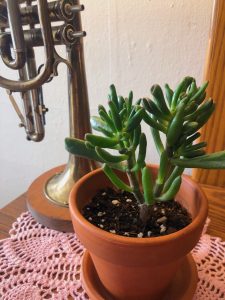
These reflections about love seem like pretty deep thoughts for a houseplant enthusiast. After growing up with little individual experience with plants or gardening, how did I become such a philosophical houseplant gardener? It all started when I was living in a blank dorm room with little life and creative expression. I did little to decorate but made the small dorm room my home here at Ohio State. While on campus, there was a booth giving away small plants. I chose a cute little golem jade plant and was a plant mom of one for about one and a half years. Fast forward to this past summer, COVID-19 is raging on in America and I am limiting my exposure and working at my essential food service job. I began slowly acquiring plants through my own purchases, but also through gifts that I received. The pandemic created time to focus on our homes and create space that we reside and refine it to our individual needs.
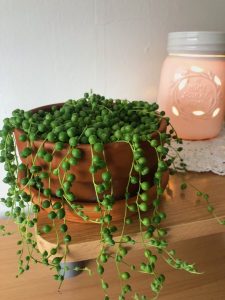
For me, I expanded on my appreciation for houseplants and what they add to my bedroom and living environment. My plant population increased exponentially. Johnson expands on this idea in The Virtues of Fishing by writing, “ in an age of performance anxiety, impending deadlines, immediate gratification, conspicuous consumption, compulsive achievement, obsessive productivity, competition without sportsmanship, and keeping up with the Joneses, an age of bored kids and overcommitted adults, the simple pleasure of fishing may be just the antidote to our collective neuroses” (Johnson 8). Taking care of my plants is my equivalent to fishing in this example (although I very much enjoy early morning fishing trips with my father). Plants give me pleasure and I am proud of them and their progress.
And I am proud of my progression towards a more complete sense of spirituality or way of pursuing the kind of life approach that I have been trying to define. Houseplants have helped heal some of the strong homesickness that I had when I moved away from home after the summer of coronavirus quarantine and stay-at-home fun. The current climate of our world has become very isolating. As social creatures, this is very hard to cope with and I know I have been struggling to adapt. I am settled into the current restrictions and guidelines; they are not new. But I have found that as every week passes in this semester, it is getting harder and harder to maintain morale and stay content with being confined to my tiny apartment. In Healing Ecology, David Loy says, “…we are an integral part of the natural world. That also means embracing our responsibility for the welfare of the biosphere, because its well-being ultimately cannot be distinguished from our own well-being” (Loy 262). My houseplants are not saving the planet by being a solution to our separation from nature. But I do embrace the responsibility of the welfare of each plant that I look over in my personal “biosphere.” In a socially distanced and semi-generic way (if you compare my plants to the beauty of the outside and natural world my plants are generic), I am working to become more connected to nature. Does this match the level of submersion that I experienced while camping for the first time this semester? Absolutely not. But these living plants are a starting point. Additionally, they give me joy and hope during this troubling time for the world and our country. Emotionally and mentally drained, I water my plants and observe their growth. This quiet time to myself has been an opportunity to reflect and re-center. This peace is desperately needed and not everything needs to have this grand reasoning for why it’s enjoyable or beneficial. I like my plants and that is enough for me.
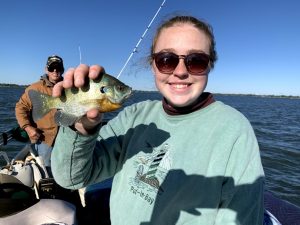
We do not call fishing “catching.” And I do not call gardening “producing.” My houseplants in my indoor garden do not serve a physical purpose as traditional gardens typically do. My plants do not grow produce or provide a source of food. In fact, I am sure that some, if not many, are poisonous if ingested in large quantities. But I do not tend to my houseplants as a way to farm crops, just as many do not go fishing for the sole purpose of bringing home fish filets. Houseplants provide many gifts.
There is no innate rhyme or reason to put plants into terracotta pots and put them crowded onto my one apartment windowsill. But giving these objects greater meaning and representation in our lives adds to my understanding and application of different concepts that I have discussed above. These concepts and lessons about life, death, sin, greed, pride, love, togetherness, and patience are accumulating in my perception and understanding of my own spirituality. Along the way I applied these lessons to my plants to explore how they affect my personal life, separate from academia, to bring home these ideas to become a more well-rounded person. My houseplants, or leaf babies as I occasionally refer to them, are a symbolic representation and visual example of these lessons I have learned and are a living, breathing example of my progress and journey towards an undefined destination to a more spiritual grounding.
References
Baer, R. (1976). Our need to control: Implications for environmental education. The American Biology Teacher, 38(8), 473-476.
Hauerwas, S. (1981). Significance of vision. In Vision and Virtue (30-47). University of Notre Dame Press.
Johnson, K. (1998). The virtues of fishing. In P. Genova, First cast: Teaching kids to fly-fish. Stackpole Books.
Loy, D. (2010). Healing ecology. Journal of Buddhist Ethics, 17, 253-267.
Niehbuhr, R. (1964). Man as sinner. In The nature and destiny of man. (178-207). Prentice Hall PTR.
Pollan, M. (2003). Second nature: A gardener’s education. Grove Press.
